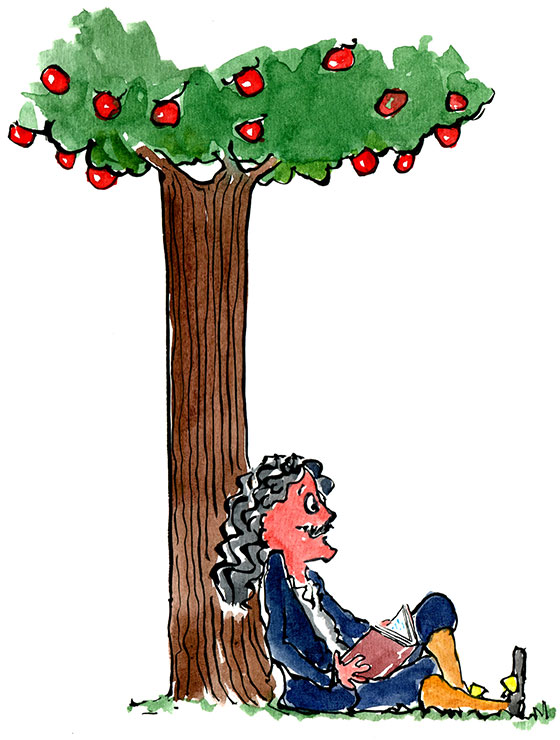Circles and PiConic Sections
The circle is one of four different shapes which can be created using “slices” through a
Circle
Ellipse
Parabola
Hyperbola
If you point the torch vertically downwards, you see a
Collectively, these four shapes are called
Conic sections were first studied by the ancient Greek mathematician
In later courses, you’ll learn much more about parabolas and hyperbolas. For now, let’s have a closer look at the ellipse.
Ellipses
An ellipse just looks almost like an “elongated circle”. In fact, you could think about it as a circle with two centers – these are called focal points. Just like every point on a circle has the same distance from its center, every point on an ellipse has the same sum of distances to its two focal points.
If you have a long string connected to two fixed points, you can draw a perfect ellipse by tracing the maximum reach of the strings:
Coming soon: Ellipses drawing interactive
There are many other physical representations of how you could draw an ellipse:
Gears
Trammel
Disk
Swing
Planetary Orbits
You might remember from the very beginning of this course, that ancient Greek astronomers believed that the Earth is at the centre of the universe and that the sun, moon and planets move around Earth on circular orbits.
Unfortunately, astronomical observation of the sky didn’t quite support this. For example, the sun appeared larger during some parts of the year and smaller during others. On a circle, every point should have
Greek astronomer Hipparchus of Nicaea
To fix this, astronomers added Epicycles to their model of the solar system: planets move on a large circle around Earth, while simultaneously rotating on a smaller circle. While very complicated, this was the most widely accepted model of our universe for more than 1000 years:
This planet makes
A 16-century drawing of epicycles in the Geocentric model. The Greek word “planetes” means “wanderers”.
Over time, people realised that Earth was just one of many planets orbiting the sun (the Heliocentric model), but it wasn’t until 1609, that the astronomer
The sun is in one of the two focal points of these ellipses. The planets speed up as they get closer to the sun, and slow down as they move further away.
A few decades later,
Gravity is what makes everything fall to the ground and gravity is also what makes the planets move around the sun. It is only the great speed at which planets move, that prevents them from falling directly into the sun.


Using Newton’s laws, you can derive the path that objects take when moving under the force of gravity. It turns out that planets move on ellipses, but other objects like comets can travel on
According to legend, a falling apple inspired Newton to think about gravity. He was one of the most influential scientists of all time, and his ideas shaped our understanding of the world for nearly 300 years – until Albert Einstein discovered relativity in 1905.